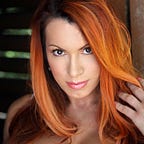What is Dark Sky Lighting and Light Pollution?
Haze. Sky Glow. When was the last time you saw a clear, starry sky? Our increased use of artificial light at night is not only impairing our view of the sky, but also affecting our safety, environment, energy consumption, and health.
We’re discovering light pollution is not only inconvenient, but damaging. Millions of migrating birds and turtles die each year due to light pollution, and it’s harming our ecosystem.
But, it’s also shockingly simple to fix.
What Is It?
Light pollution is a side effect of modern times caused by the widespread use of exterior and interior lighting, billboards, commercial properties, sporting venues, street lights, advertising, offices, and factories. Unfortunately, much of it goes to waste, because it’s inefficient, overly bright, poorly targeted, improperly shielded, and at times, simply unnecessary.
The Effects of Light Pollution
Eighty percent of the Earth’s population is living under light-polluted skies (also called sky glow) and cannot experience natural light, so it’s become an international concern. Increased artificial lighting is causing excessive energy consumption, disrupting our ecosystem and wildlife, and harming human health.
Light pollution can cause disability glare, also known as veiling glare, which occurs when stray light scatters in the eye, producing a veil over the retina and affecting visual performance.
Visual performance may remain impaired for some time well after the incident. Veiling glare reduces contrast as well as color and spatial perception, which can lead to unsafe driving conditions.
Wasted Light Results in Wasted Energy.
The total amount of wasted electrical energy each year is enough to illuminate over 11 million homes and power over 777,000 cars. Light pollution affects all of us.
Harm to Animals
Mammals such as deer, raccoons, coyotes, and moose have difficulty foraging for food at night due to over-illumination. They risk exposure to natural predators and are facing increased mortality rates due to night vision impairment. They also experience a decline in reproduction that leads to a shrinking population. Birds such as owls and nighthawks require moonlight to hunt and migrate.
Artificial light sources can overwhelm natural light sources, causing birds to be drawn to or fixated on the artificial lights. This results in birds deviating from their intended migration route, flying until they experience exhaustion and collapse, and becoming prey to other animals. Marine birds such as albatrosses are known to collide with lighthouses, wind turbines, and drilling platforms at sea due to their bright lights.
In North America alone, 100 million birds die annually in collisions with illuminated buildings and towers. Sky glow affects amphibians such as frogs, toads, and salamanders in marshes and wetlands. The orange haze disorients them, which causes a decrease in feeding and mating. It impairs the natural instincts that protect amphibians against predators and the elements.
Sea Turtles
Sea turtles are greatly affected by light pollution. Female turtles nest on dark, remote beaches, but bright coastal lights prevent them from finding safe areas for their eggs. This leads to the female turtles depositing their eggs in an unsafe area or the ocean. Sea turtle hatchlings instinctively crawl toward the brightest part of the beach, which for many centuries was the moonlight and starlit ocean. However, excessive lighting on the beach or near the shore confuses the hatchlings and causes them to wander away from the ocean. The results are disastrous, with hatchlings eaten by predators, run over by vehicles, drowning in swimming pools, or dying from dehydration or exhaustion.
What You Can Do
The good news is, like any source of pollution, photo pollution is reversible. A growing number of scientists, homeowners, environmental groups, and civic leaders are taking action to restore the natural night. This is where Dark Sky Lighting comes into use.
- Only use lighting when and where it’s needed
- If safety is a concern, install motion detector lights and timers. Don’t leave outdoor lights on needlessly.
- Properly shield all outdoor lights and find lights that point downward
- Do not use cool blue light
- Switch to warm-colored light
- Dim outdoor lights: keep them on a lower setting
- Keep your blinds drawn to keep light outside
- Implement Dark Sky Lighting
Dark Sky Lighting
It is crucial to have shielded light. Dark Sky units tend to be a typical lamp, often a spiral CFL, which is contained within a special housing. This housing prevents light from being emitted in any direction except the intended one. They are generally intended to keep light from shining upwards, although there are some units designed to stop side lighting as well.
We now know that color matters. Because blue light brightens the night sky more than any other color of light, it’s important to minimize the amount emitted.
Blue light is considered the most dangerous and also the most common with night lighting. International Dark Sky Association recommends that only warm light sources be used for outdoor lighting, along with lower light.
Just a few tweaks and this could be the simplest environmental issue to rectify.
Fixing the light pollution crisis starts with you.
Thank you for reading…and thank you for acting on this.
April K. Hunter is a television writer, host of The A Show podcast, short story & children’s book author, and primarily writes thrillers and memoirs. She has her B.F.A. in Creative Writing for Entertainment and her work appears in a variety of publications, including RxMuscle, Page & Spine, Medium, and European Journal FONT. Her first book, UNDISCLOSED DARKNESS can be found on Smashwords and Barnes & Noble. Her children’s book, Monty, A Tale of No Tail, can be found on Amazon and Barnes & Noble.
A model and pro wrestler, she’s currently a part-time superhero at geek conventions, Mother of Chickens, fostering dogs until they’re spoiled rotten, learning something new each day, or scouring the internet for funny memes while drinking too much coffee.
